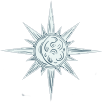Tarot card reading is a form of divination and self-reflection that uses a deck of 78 cards to gain insight into a person’s past, present, and future. It combines intuition, symbolism, and archetypal storytelling to provide guidance, clarity, and inspiration.
Structure of a Tarot Deck
1. Major Arcana (22 Cards):
These cards represent significant life events, spiritual lessons, and major influences.
Examples include:
o The Fool (0): New beginnings, spontaneity, and risk-taking.
o The Magician (1): Manifestation, resourcefulness, and power.
o The Lovers (6): Relationships, choices, and harmony.
o Death (13): Transformation, endings, and rebirth (not literal death).
2. Minor Arcana (56 Cards):
These cards depict everyday events and challenges and are divided into four suits:
o Cups (Water): Emotions, relationships, intuition.
o Pentacles (Earth): Finances, work, material possessions.
o Wands (Fire): Creativity, passion, inspiration.
o Swords (Air): Thoughts, communication, conflict.
Each suit contains 14 cards, including numbers (Ace to 10) and four court cards (Page, Knight, Queen, King).
How Tarot Reading Works
1. The Querent (Seeker):
The person seeking answers asks a question or sets an intention for the reading.
2. Card Spreads:
Tarot spreads are specific layouts that position cards in meaningful patterns. Popular spreads include:
o One-Card Pull: A single card for daily guidance or quick answers.
o Three-Card Spread: Past, present, and future; or situation, challenge, and
advice.
o Celtic Cross: A more detailed spread for in-depth readings.
3. Interpretation:
The reader interprets the cards based on:
o Symbolism in the imagery.
o The position of the card in the spread.
o Upright or reversed orientation (optional).
Uses of Tarot Card Reading
1. Self-Reflection: Gain insight into emotions, thoughts, and behaviors.
2. Decision-Making: Explore possible outcomes and make informed choices.
3. Spiritual Growth: Understand life lessons and align with personal values.
4. Problem-Solving: Discover new perspectives or hidden influences.
Misconceptions about Tarot
1. Not Fortune-Telling:
Tarot is not about predicting the future with certainty; it reflects energies and
possibilities based on current paths.
2. Not Mystical Magic:
While some see tarot as spiritual, others view it as a psychological tool that uses
archetypes and storytelling to unlock intuition and creativity.
Tips for a Successful Tarot Reading
• Have an Open Mind: Be receptive to the insights offered.
• Ask Specific Questions: Instead of "Will I be happy?", ask "What steps can I take to find happiness?"
• Focus on Empowerment: Tarot is about guidance, not fear or dependency.
If you'd like a sample reading, a card interpretation, or help with a specific question, let me know!

